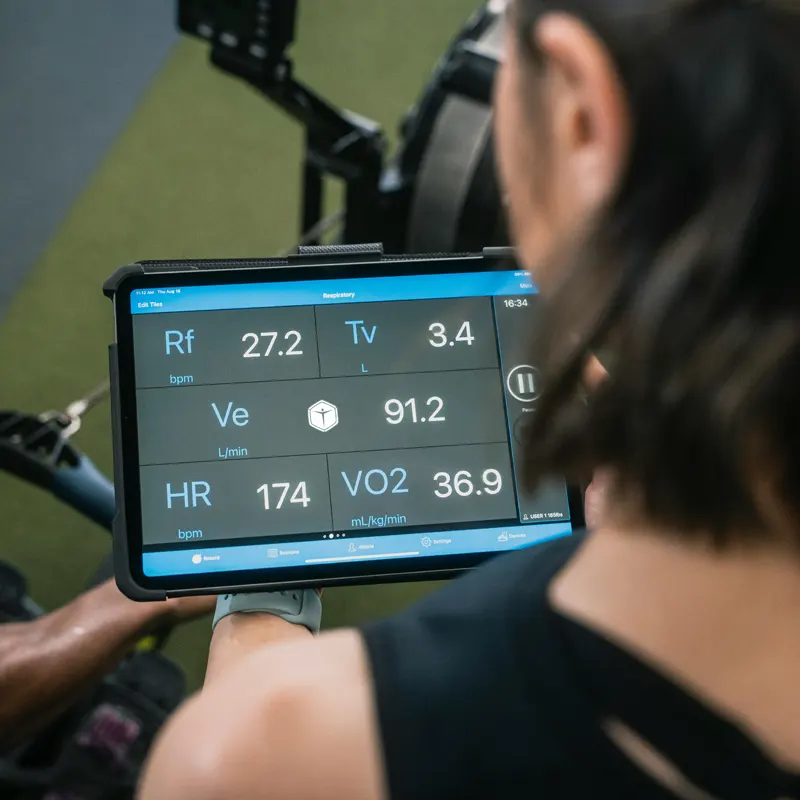XONE Dance Performance Assessment
Where Precision Meets Artistry.
At XONE Performance, we understand that dance is more than movement—it’s a fusion of strength, control, expression, and resilience. The XONE Dance Performance Assessment delivers a dancer-specific evaluation using elite diagnostics and expert insight, helping dancers refine technique, enhance performance longevity, and elevate artistry. Whether you are a ballet soloist, contemporary performer, or competitive dancer, we provide the tools and data to move smarter, perform stronger, and dance longer.
Key Components of the Dance Assessment
Tailored specifically for the demands of dance:
- Pre-Assessment Consultation with a Dance-Specialized Kinesiologist
Review your dance style (ballet, contemporary, hip-hop, etc.), technical focus, injury history, and performance goals to guide your personalized assessment. - Anthropometric Measurements
Analyze limb lengths, joint alignment, and body proportions to inform turnout potential, hypermobility management, and injury prevention strategies. - Pulmonary Function Testing (Spirobank)
Assess breathing efficiency for sustained phrasing, high-intensity choreography, and energy control in performance. - DARI Motion 3D Movement Analysis
Analyze dance-specific biomechanics:- Pirouettes: Alignment and force distribution
- Grand jetés: Takeoff and landing forces
- Port de bras: Scapular rhythm and arm pathway control
- Floor transitions: Pelvic stability and flow
- Force Deck Jump and Landing Assessment
Measure vertical force, landing stability, and plyometric efficiency across sautés, allegro, and grand allegro movements. - Force Frame Isometric Strength Testing
Evaluate critical stabilizers—turnout muscles, ankle strength, hip and core control, for technical consistency and injury prevention. - Senaptec Sensory Station Testing
Test visual awareness, depth perception, reaction time, and spatial tracking—essential for group choreography, partnering, and dynamic staging. - Expert Data Review
Dancer-specific interpretation by XONE specialists, connecting biomechanical data to technical and expressive goals. - Post-Assessment Consultation
Detailed review mapping out tailored strategies to enhance technique, prevent injury, and support performance development.

Optional Add-Ons
- VO₂ Max Testing:
Evaluate endurance capacity for full-length performances, competitions, and touring schedules. - DEXA Body Composition Scan:
Monitor lean mass distribution and bone density, essential for dance-specific physical demands and injury resilience. - Hand Dynamometer Testing:
Assess grip strength critical for lifts, partnering, and apparatus-based disciplines. - Auditory Timing and Rhythm Assessment:
Test auditory processing for synchronization and musical phrasing accuracy.
Turning Data Into Dance Excellence
We don’t just assess. We transform movement into performance.
- Technical Refinement
Motion capture and force analysis detect inefficiencies such as pelvic tilt during pliés or compensations during turns, allowing targeted technical corrections. - Enhanced Endurance and Recovery
Spirometry and VO₂ Max data guide breath control strategies for sustained, expressive dancing without early fatigue. - Injury Risk Reduction
Strength ratios, force absorption metrics, and mobility testing highlight risks for ankle, hip, and lower back injuries common in dance, allowing proactive strength and conditioning.
- Spatial Awareness and Cognitive Reaction
Sensory training enhances peripheral awareness and quick decision-making in dynamic choreography and stage environments. - Genre-Specific Programming:
- Ballet: Turnout strength drills, pirouette acceleration mechanics
- Contemporary: Floorwork fluidity and transition control
- Commercial: Plyometric power and isolation precision
- Long-Term Career Protection
Our programming emphasizes not just immediate improvements, but strategies to build durability for a lifetime of performing.
The XONE Advantage
While competitors offer isolated assessments or generic simulators, our fusion of diagnostic rigor and hyper-realistic training environments provides actionable insights you can feel on the course. From millimeter-precise joint tracking to replicated Augusta National winds, we bridge lab-grade science with championship performance.